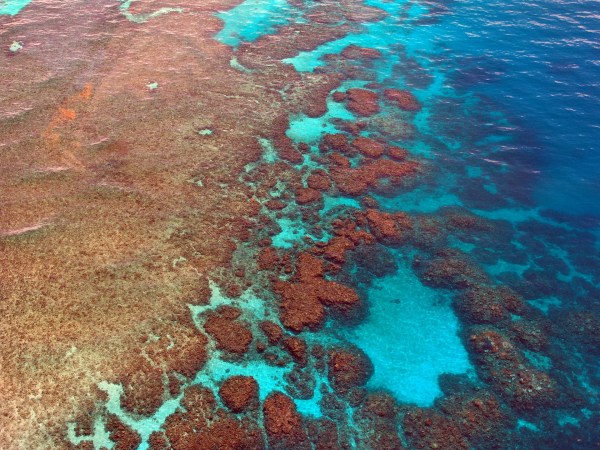
Australia is a continent as well as a country. Its remote location has given rise to an uniquely Australian ecosystem, one that the rest of the world might see as wild and dangerous. However, since colonial times, Australia’s development has been similar to that of the Americas and other places in the world. Then, after World War II, the continent’s economy boomed along with those of Japan, the U.S. and many other countries. Increased tourism and immigration were part of the reason for this, as was increased postwar industrial production. During this time, Australia imported a great deal of American technology and culture; improved their infrastructure; provided greater access to healthcare and other social benefits; and grew from a relatively small, isolated nation to the important economic power we know today.
ESSENTIAL KNOWLEDGE: HISTORY OF AUSTRALIA
Ancient Times (3000 BCE to 500 CE)
The Aborigines: The indigenous people of Australia, who might have come from Asia on a land bridge during prehistoric times. (During the last Ice Age, sea water was trapped as ice and sea levels were much lower, allowing for migrations in areas that wouldn’t be possible otherwise.) The Aborigines lived in tribal societies ruled by chiefs. They are known for their music, including the use of the didgeridoo, a wind instrument made from a hollowed-out tree trunk; for their spiritual connection to nature, including their concept of the Dreamtime, which refers to the time of creation and the connection between the living world and the spirit world; and for their expert wood carving.
Easter Island statues: The famous collection of around 900 statues that was created by the Polynesians or an earlier unknown people on Easter Island in the Pacific. They are made of volcanic rock and some stand over 30 feet tall. Shaped as human figures, including full bodies, torsos and heads and shoulders, they might have represented watchful ancestors.
The Middle Ages (500 CE to 1500 CE)
The Maori: The indigenous people of New Zealand, who likely arrived during the Middle Ages from Polynesia. They are known for their traditional forms of dance; their intricate tattoo art; and their seafaring skills.
Early Modern Times (1500 CE to 1900 CE)
New Holland: The name the Dutch gave the Australian continent after locating it in the 1600s. (The Dutch also located Tasmania and New Zealand around this time.) The Dutch did not settle the area, however.
James Cook: The British explorer who is known for his trips to the Pacific in the 1700s: several to New Zealand and Australia, parts of which he claimed for Britain; one to the Hawaiian Islands; and one to Antarctica, where thick pack ice prevented him from landing. He is also known as Captain Cook.
New South Wales: The name that Captain Cook gave to the east coast of Australia while mapping it, which later became the name of the first Australian colony that included Sydney Cove. After other colonies arose in Australia, then gained independence, New South Wales became one of the six Australian states.
Arthur Phillip: The leader of the first British settlement of Australia, which was made up of over 700 convicts, a few free settlers, and 200 marines. He was sent there in the late 1700s by the British government to establish a penal colony for English prisoners in order to alleviate prison overcrowding in England. After settlement, the British and Aborigines coexisted, but not entirely peacefully. Many Aborigines were killed in conflicts over land and many others died of Western diseases.
Sydney Cove: The bay settled and named by Arthur Phillip’s group of settlers, who struggled to survive in an unfamiliar climate with limited supplies. Later, other groups of convicts and settlers arrived. In the 1800s other colonies were built, some penal colonies and some free.
Treaty of Waitangi: The 1800s treaty between the British and the Maori that gave sovereignty over the island to the British in exchange for various rights and protections, including land ownership rights. Two versions of the treaty were written, though, with one leading the Maori to believe they were giving up governorship, not sovereignty. Following this, there were wars between the British and Maori. Eventually, New Zealand became an official British colony.
The Australian gold rush: The influx of settlers in the mid-1800s that occurred after the discovery of gold there and that resulted in the creation of five new Australian colonies: Tasmania, Western Australia, Victoria, Queensland, and South Australia. After Australia gained independence, these, with New South Wales, became the six Australian states. During the gold rush, the Aboriginal population declined significantly due to land fights and foreign disease.
The Modern Era (1900 CE to the Present)
The Commonwealth of Australia: The full name of today’s Australia, a parliamentary democratic federation of the six Australian colonies, which was founded in the early 1900s. Though it is part of the British Commonwealth (a group of former British colonies), it is sovereign and independent. Its constitution is partially based on the American and British constitutions and calls for free trade and equal rights.
The Australian Imperial Force (AIF): The Australian military group that fought alongside the British during World War I and participated in significant battles, including those at Gallipoli and the western front. Australia allied with Britain because they were a part of the British Commonwealth.
Battle of Kokoda Track: A World War II battle during which Australia successfully prevented Japan from invading. In spite of having limited resources, Australia fought on the side of the Allies in Europe and in the Pacific; were faced with invasion by Japan; and suffered the 1941 bombing of their city, Darwin, by Japan.
Battle of the Coral Sea: A World War II battle during which Australian and American forces successfully halted a Japanese naval offensive
***
Babies come. But babies don't go. Get Fights You’ll Have After Having a Baby: A Self-Help Story on Amazon now.
***